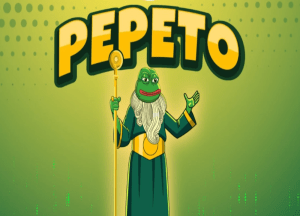What is Stablecoin Crash? The Confusing Term, Explained
Decentralized Finance (DeFi) is in the midst of a severe summer heatwave, but “crypto winter” is on its way. Maybe. While Bitcoin has dropped two-thirds of its value since a record high in November, Ethereum has lost nearly as much in the same time period. After Celsius Network unexpectedly halted all withdrawals this week, raising doubts about its financial viability, top crypto exchange Coinbase stated that it was eliminating 18 percent of its workers. Tens of billions of dollars in real money have vanished into thin air.
Investors are running from riskier investments like digital currencies and moving to more secure ones like bonds, which may explain in part why cryptocurrency prices have plummeted. Cryptocurrencies are also highly volatile, as the Wall Street Journal points out, with Bitcoin’s current decline being only “the fourth worst sell-off in the cryptocurrency’s 13-year existence.” However, the collapse of TerraUSD, or UST, a so-called “stablecoin,” was the catalyst for this broader market crisis.
“If you haven’t heard of UST or stablecoins, you’re missing out. “Daniel Van Boom of CNET explains. The following is a complete overview of stablecoin crash. Let’s have a look!
Exactly What is a Stablecoin, and How Does it Work?
A stablecoin is a cryptocurrency that aims to be linked to a stable currency, such as the US dollar, in order to keep its value stable. Tether and USD Coin are prominent stablecoins that are also alongside TerraUSD in terms of market cap. For example, if you have 1,000 USDC tokens, you may trade them for $1,000 any moment,” Van Boom adds.
The Journal describes stablecoins as “a foundation of crypto’s parallel financial system.” Traditional finance, with its reliance on government-backed currencies, is essential for crypto aficionados. Rent is due; automobiles are purchased; bills must be paid.” However, they choose to trade and invest in cryptoland, not dollars, euros, or pounds. It’s as if the value of stablecoins is an asset that everyone knows and shouldn’t fluctuate. They’re supposed to be a safe refuge in the turbulent cryptocurrency market, and that’s exactly what they are.
How Do They Function?
For the most part, stablecoins like Tether and USDC are backed by dollar-denominated securities or treasury bills. In theory, every coin has a corresponding physical asset. The Journal explains that TerraUSD takes a more complicated method. When everything else fails, it has a few billion dollars in Bitcoin reserves as a safety net of last resort as an algorithmic stablecoin.
Cyrus Younessi, former head of risk management at stablecoin minter MakerDAO, tells CNET that a decentralized stablecoin is the Holy Grail of DeFi. “If you could take those assets, wring stability out of them, and productize it, then that’s significant,” he says. Despite their volatility, cryptocurrencies have the potential to remove currency from the control of politicians and financial bureaucrats. “However, it’s not very feasible.”
What Led to the TerraUSD Stablecoin Crash ?
In a nutshell, the bank was on the verge of collapse. Over the span of a May weekend, TerraUSD fell below its $1 peg due to a series of big withdrawals from Terraform Labs’ crypto bank, Anchor Protocol, created up for cryptocurrency investors. Shockingly, investors began withdrawing UST coins from Anchor in an effort to scare the rest of the community.
According to the Journal, this is how the system was intended to work in the first place. To reduce the supply of TerraUSD, if the price drops below $1, traders can “burn” the coin, or permanently remove it from circulation, in exchange for one new unit of Luna, TerraUSD’s sister cryptocurrency. To counter this, if TerraUSD rises beyond $1, traders can “burn Luna and generate new TerraUSD,” allowing the market to collectively balance TerraUSD at its designated peg, according to the Journal’s additional information.
If traders don’t desire Luna, the system will not work. When TerraUSD’s peg was lost this week, investors didn’t want Luna. They panicked and sold Luna.” TerraUSD and Luna both collapsed due to huge withdrawals, which may have been an attempt to profit from shorting Bitcoin.
What’s the Point of Caring?
In Van Boom’s view, “this matters for three reasons.” Firstly, over $17 billion in crypto value was wiped away by Luna and UST, and their collapse sent shockwaves throughout the whole crypto market. In the second place, if this was a targeted attack, it raises concerns about other stablecoins, he says. Even more importantly, the collapse of United States Steel has drawn attention from powerful politicians and regulators, which could lead to dreaded regulation.
Cryptocurrency is now a developed financial system that functions as a substitute for traditional banks and lending institutions, according to the Journal. “However, TerraUSD’s fall raises serious doubts about the aspirations of crypto creators to create a new financial system. Cryptocurrencies are still vulnerable to bank runs, and stablecoins aren’t exempt from this risk.
Furthermore, actual people suffered as a result of this incident. Some of the people who lost money when TerraUSD failed because they didn’t know that TerraUSD was where their money was housed are wondering why anyone would tie all their money to an algorithmic stablecoin.”
Among nearly 5,000 individual investors who contributed $47 million to Stablegains, a now-defunct company that promised a digital replica of an interest-bearing savings account with interest rates of up to 15%, is Steve Insall. An app on his phone showed him “seeing his life savings go by the second,” and as he tried in vain “to withdraw any remaining balance that was there just days before” from his account, he tried to keep it from his wife, who was unaware of his distress.
VIt’s not just bartenders and postal workers who feel they were mislead by Stablegains’ marketing, but also general contractors, who believe they were misled by Stablegains’ emphasis on the benefits of decentralized finance, according to Marketplace. Customers who studied the company’s terms and conditions would discover that the company was generating its high interest rates by putting cash into the Anchor Protocol. When Terra crashed, so did the anchor, which wiped out Stablegains’ high interest rates.
There isn’t a lot of guidance in this field because it is so new, says Duke finance professor Campbell Harvey. “People typically immediately grasp for the yield and then sometimes are negatively surprised when a problem emerges.” The “truly, tremendous ups and downs” are a guarantee.










